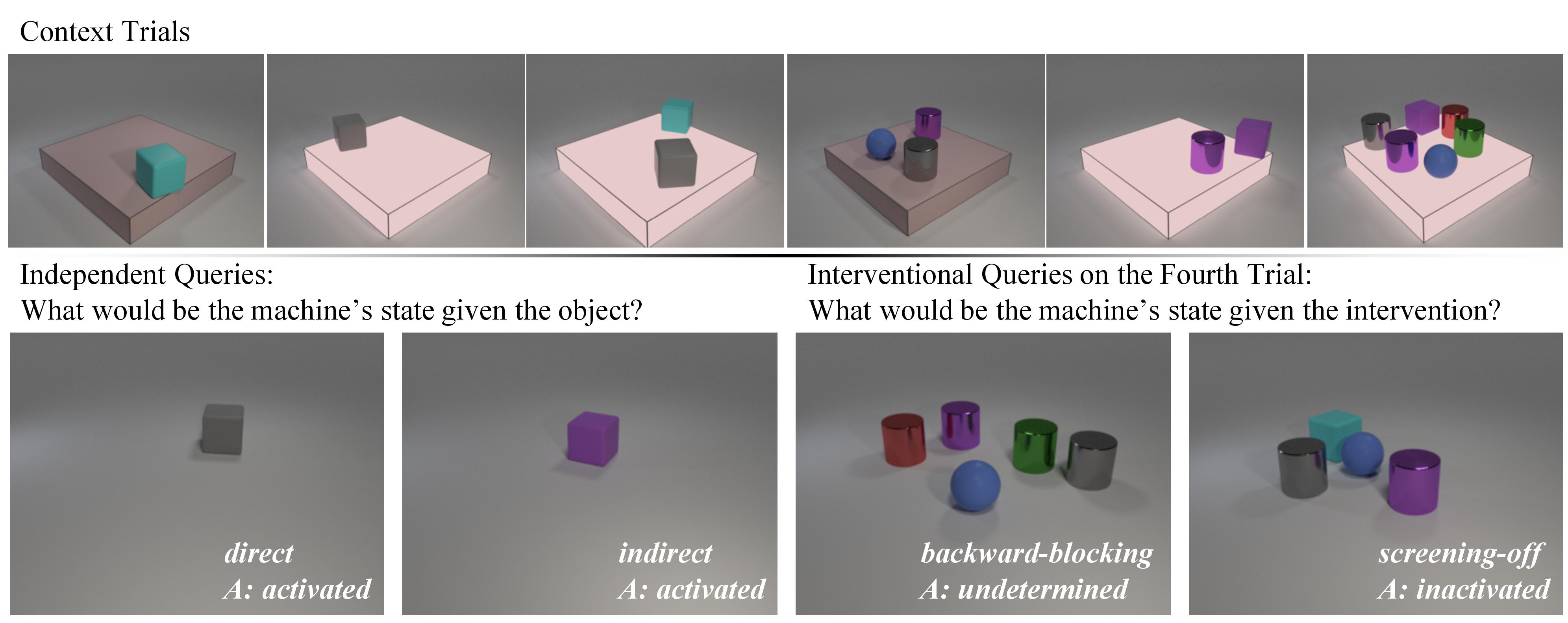Selected Figures


Chi Zhang1, Baoxiong Jia1, Mark Edmonds1, Song-Chun Zhu1, Yixin Zhu1
1 Center for Vision, Cognition, Learning, and Autonomy (VCLA), UCLA
Causal induction, i.e., identifying unobservable mechanisms that lead to the observable relations among variables, has played a pivotal role in modern scientific discovery, especially in scenarios with only sparse and limited data. Humans, even young toddlers, can induce causal relationships surprisingly well in various settings despite its notorious difficulty. However, in contrast to the commonplace trait of human cognition is the lack of a diagnostic benchmark to measure causal induction for modern Artificial Intelligence (AI) systems. Therefore, in this work, we introduce the Abstract Causal REasoning (ACRE) dataset for systematic evaluation of current vision systems in causal induction. Motivated by the stream of research on causal discovery in Blicket experiments, we query a visual reasoning system with the following four types of questions in either an independent scenario or an interventional scenario: direct, indirect, screening-off, and backward-blocking, intentionally going beyond the simple strategy of inducing causal relationships by covariation. By analyzing visual reasoning architectures on this testbed, we notice that pure neural models tend towards an associative strategy under their chance-level performance, whereas neuro-symbolic combinations struggle in backward-blocking reasoning. These deficiencies call for future research in models with a more comprehensive capability of causal induction.


@inproceedings{zhang2021acre,
title={ACRE: Abstract Causal REasoning Beyond Covariation},
author={Zhang, Chi and Jia, Baoxiong and Edmonds, Mark and Zhu, Song-Chun and Zhu, Yixin},
booktitle={Proceedings of the IEEE Conference on Computer Vision and Pattern Recognition (CVPR)},
year={2021}
}